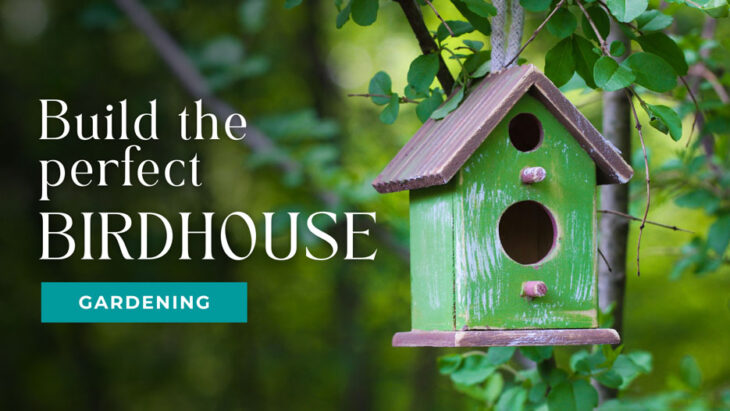If you garden and enjoy plants, chances are you love birds, too. Although most birds nest in spring, some birds hatch more than one flock a year. Providing nesting areas encourages our feathered friends to visit and maybe stay while raising their young.
WHAT KIND OF BIRDHOUSE DO BIRDS PREFER?
Birdhouses should be made of wood. Not only is wood easily available, but it’s durable and porous enough to allow moisture and heat to escape during our hot summers. Metal and plastic can get too hot, harming baby birds.
Natural colors like gray, green or brown are preferred, as they tend to blend into the surroundings best. Bright colors and white are not favored because they can attract predator attention.
WHY WON’T BIRDS USE MY BIRDHOUSE?
Birds are picky about the details when it comes to nesting, including the size of the birdhouse or nesting box, the size of the opening and location. This is most applicable to certain species. If you want to see bluebirds, for instance, build proper-sized bluebird nesting boxes, with an opening 1 inch to 1.5 inches in diameter. Larger openings allow other bird species to take over the nesting box.
SHOULD I CLEAN OUT MY BIRDHOUSE EACH YEAR?
Yes, as cleaning it helps prevent parasites, bacteria and debris that can cause target bird species to nest elsewhere. When selecting a birdhouse, be sure it has easy access for cleaning.
WHERE SHOULD I PLACE MY BIRDHOUSE?
• Don’t place birdhouses too close to feeding stations or near birdbaths, as it may become noisy with visiting birds or predators seeking food.
• Place birdhouses facing east. This allows morning sun to warm the birdhouse when it’s cold. Afternoon sun is so intense that it could overheat and possibly harm birds.
• Avoid trees and buildings, as raccoons, squirrels and cats can easily climb trees to reach nesting boxes.
• Proper spacing is at least 25 feet apart to avoid territorial conflicts between birds.
• Avoid dense vegetation, which can harbor predators. Place predator baffles (available from many major retailers) below birdhouses to deflect climbing animals.



